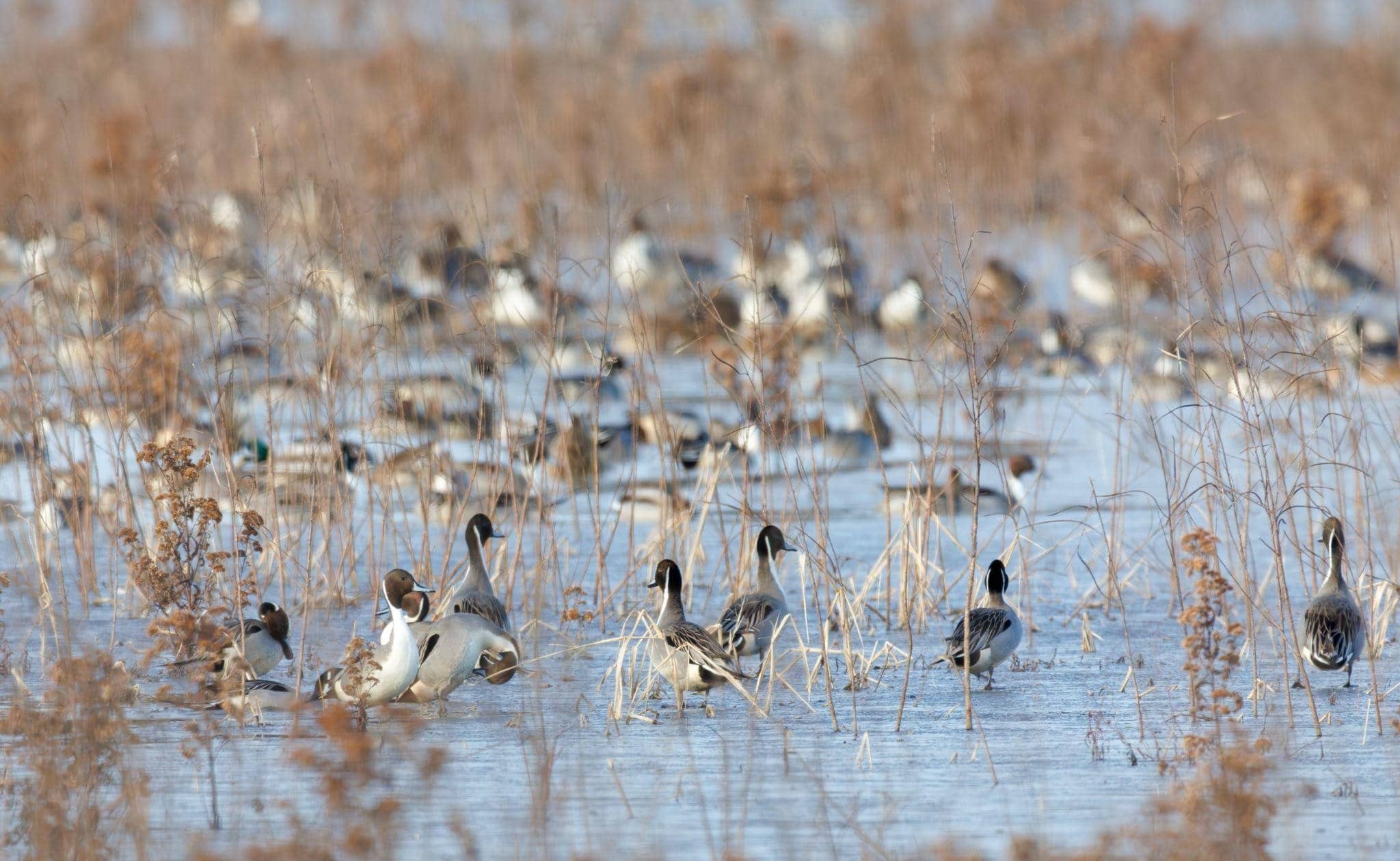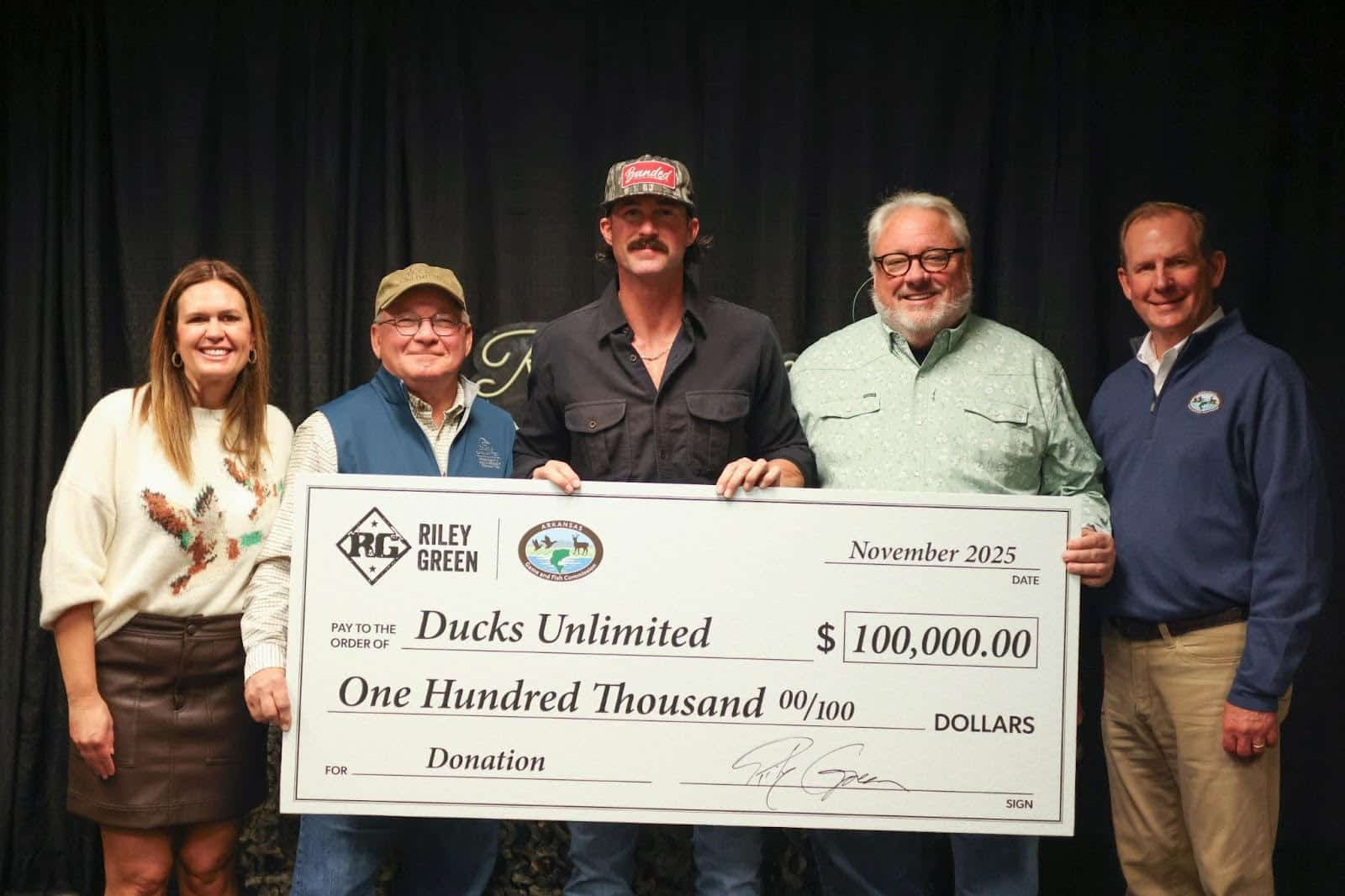War Eagle Revival: Moving Mountains for Conservation
ON 08-25-2025
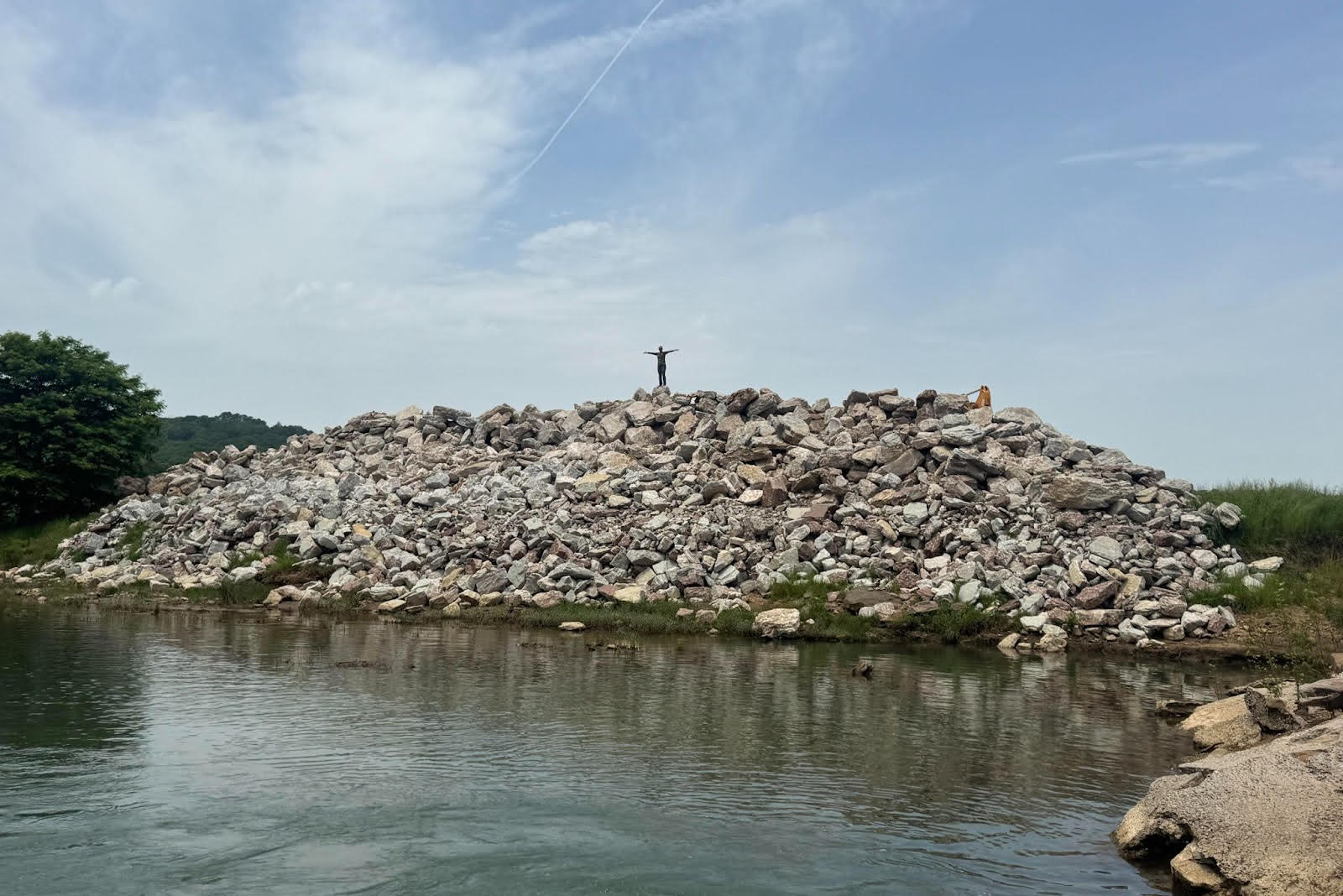
HUNTSVILLE — The Arkansas Game and Fish Commission and its conservation partners celebrated another major milestone in the restoration of War Eagle Creek this summer with the completion of an impressive restoration of three-quarters of a mile of the creek’s main channel to halt erosion and promote clean water for the watershed.
Flow State LLC completed the $2.3 million project, which was funded, in part, by an America the Beautiful Challenge Grant.
War Eagle Creek is one of the largest tributaries to Beaver Lake, the source of drinking water for more than 550,000 residents. Development and age have taken their toll on this critical waterway. Manmade obstructions and water crossings blocked the flow of water and rerouted portions of the stream, which increased the amount of sediment scoured into the channel, degrading water quality and threatening the health of many delicate species that call these waters home.
That sediment increases the turbidity (murkiness) of the water throughout the watershed, which supports 27 species of greatest conservation need according to the Arkansas Wildlife Action Plan. Sediment levels are so great that some sections of the watershed have been listed as impaired water bodies by the Arkansas Department of Environmental Quality under the Federal Clean Water Act.
“According to a study done by the Beaver Watershed Alliance, the work done this summer will reduce sediment going into War Eagle Creek by about 6,000 tons per year,” Garrett Grimes, stream habitat coordinator, said during a recent presentation to Arkansas Game and Fish Commissioners. “That’s the equivalent of 300 dump truck loads of sediment and gravel that will no longer be entering the creek.”
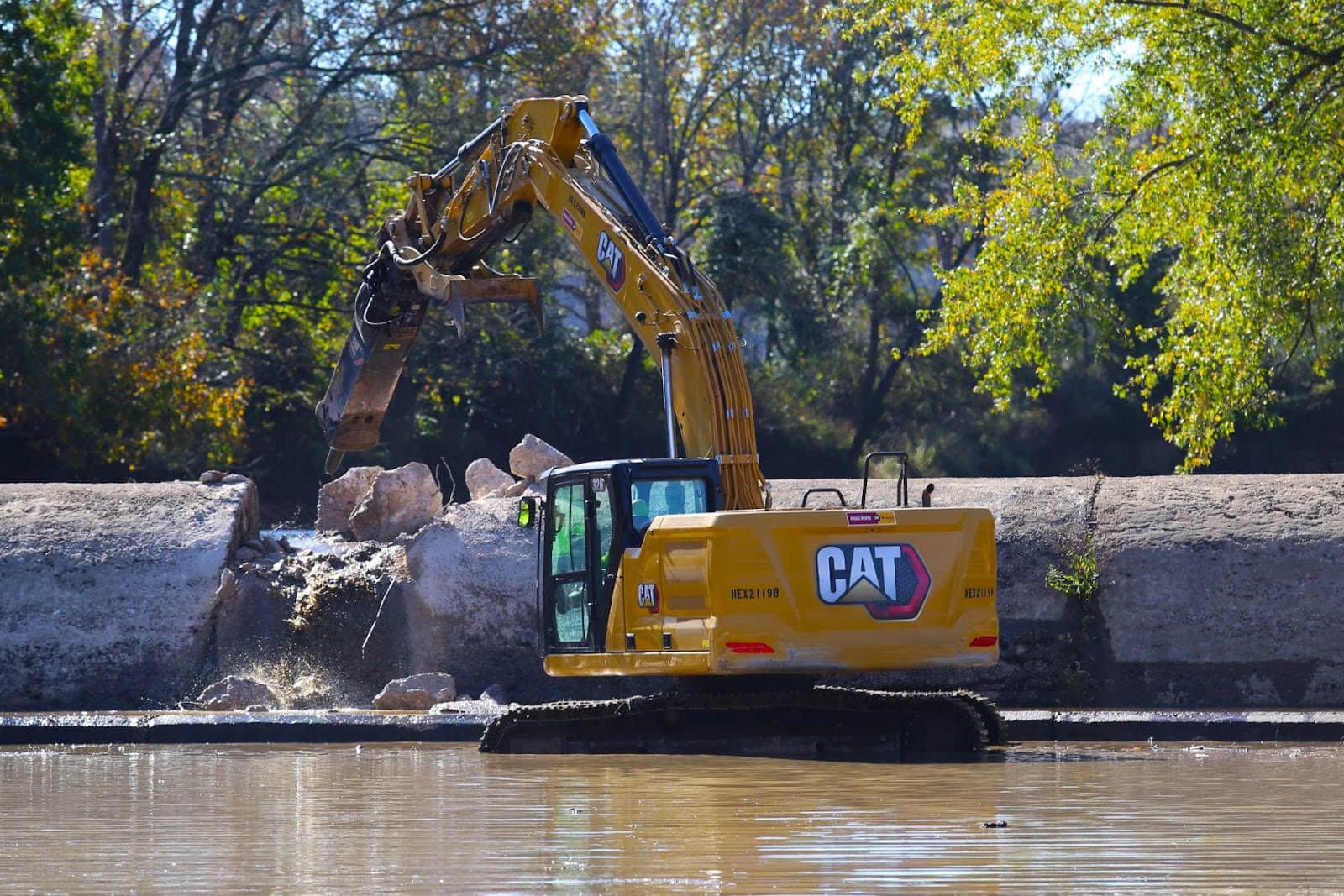
First Steps to Freedom
The creek channel restoration is only one component of a larger project to revive and restore War Eagle to a more natural path. The AGFC, Beaver Watershed Alliance, U.S. Fish and Wildlife Service, local landowners, nonprofits, and state and local governments all have played key roles in rebuilding War Eagle and securing its future.
Last year saw the removal of a low-head dam that formed Huntsville Lake, a small water body that once provided water to the nearby town of Huntsville. The lake was abandoned as a water source in the 1990s, but the effects of the barrier persisted.
A concrete structure installed years ago about half a mile upstream to redirect overflow from the creek was also removed last year, marking the halfway point in barrier removals for the project. Both barrier removals were made possible with the help of the U.S. Fish and Wildlife Service’s National Fish Passage Program and set the stage for the work done this summer.
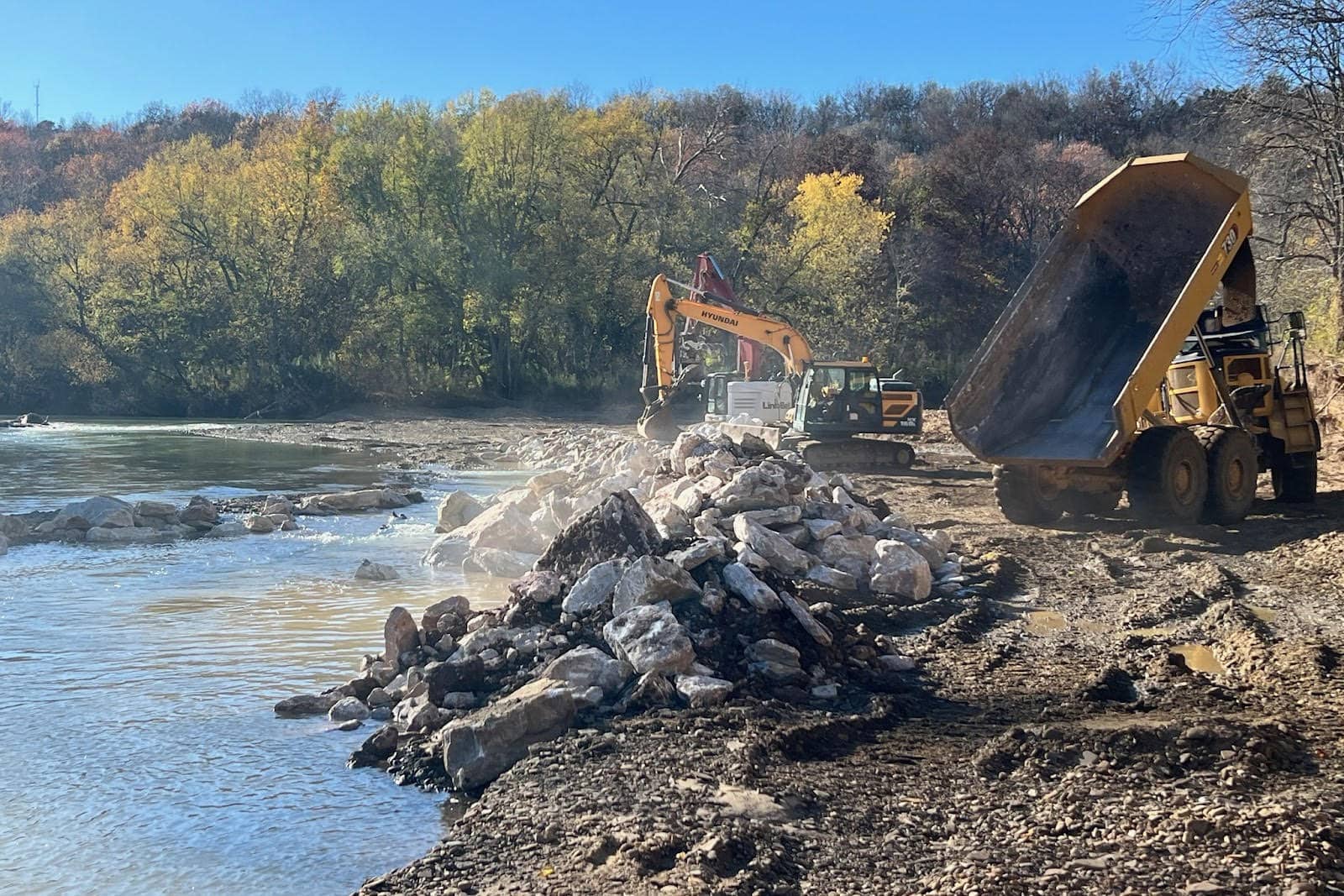
“The creek channel work took place in much of what was once Huntsville Lake,” Grimes said. The contractors plugged the old arm of (Huntsville Lake) and realigned the creek channel to its former location. The new channel bend angle is much softer, preventing the scouring effect of a sharp turn during heavy current.
“Contractors also installed two engineered graded rock riffles,” Grimes said. “Those serve to preserve the grade of the stream, protect upstream pool habitat and offer additional habitat themselves.”
They also created 5.5 acres of wetlands in the previous overflow channel, which will serve as a sponge, temporarily absorbing floodwaters to prevent excess erosion and filtering sediment from the main channel to improve water quality.
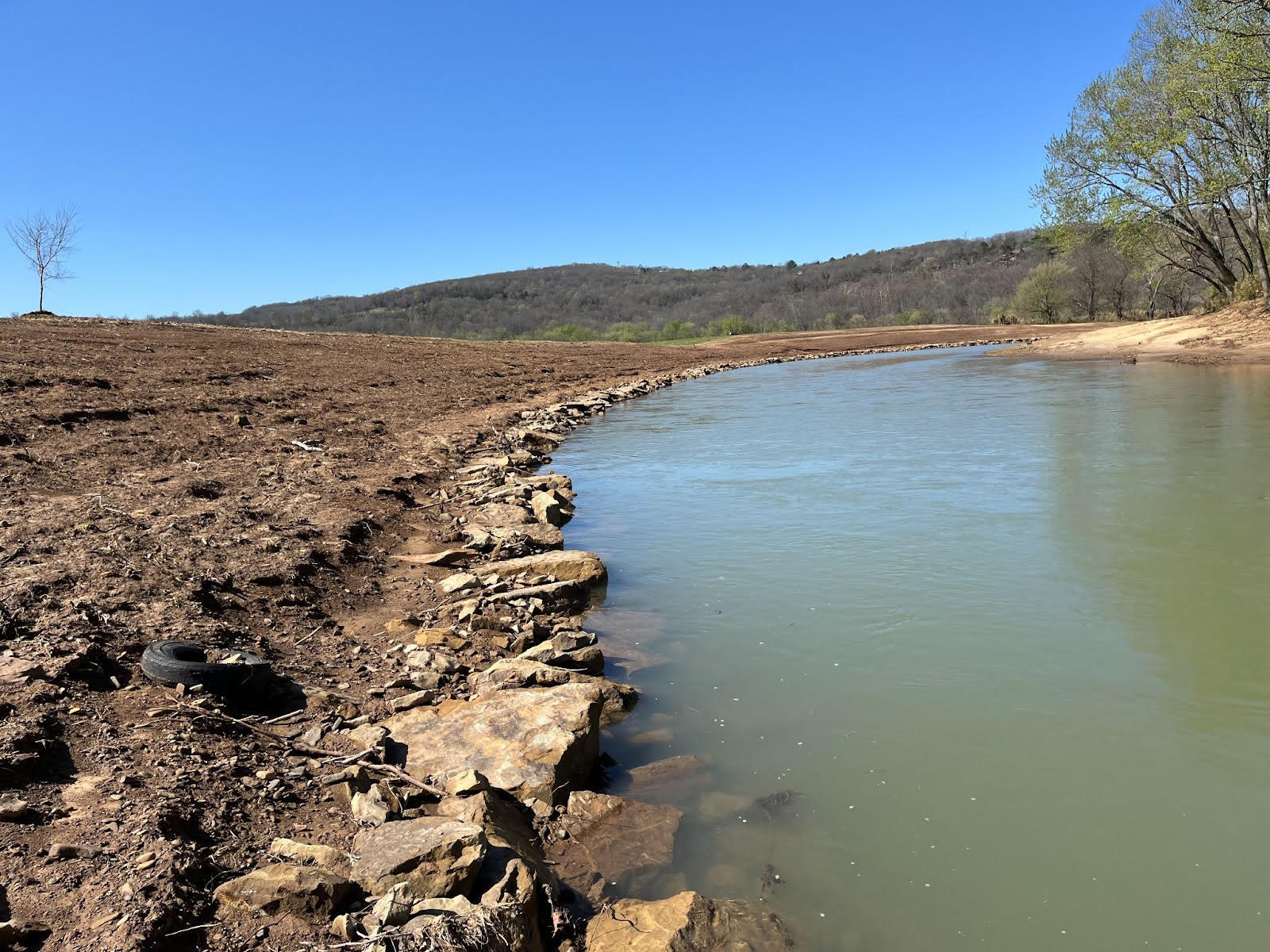
The Road Ahead
The work is far from over. AGFC crews will be revisiting the restored site this fall to plant native trees and shrubs to stabilize the soil and further improve the stream’s habitat. Rabbit’s foot mussels, which were collected before the construction took place and propagated at one of the AGFC’s hatcheries, will also be reintroduced to the site where they once thrived.
The partnership is already sharpening its pickaxes to tackle the last two obstacles in the project. Two final barriers, a bridge on Gar Hole Road and a concrete crossing on a neighboring landowner’s property, are on tap to be removed in 2026. These removals will require massive amounts of natural in-stream structures to control the flow of water once these dams are removed, and AGFC staff have already begun the groundwork for that effort.
“Staff from our Fisheries, Wildlife Management and Operations divisions all pitched in to move more than 2,700 tons of boulders to the site of the concrete crossing,” Garrett said. “Over two weeks, we used every single dump truck in the agency, and we’ll be ready to get moving on some of that work as early as this fall.”
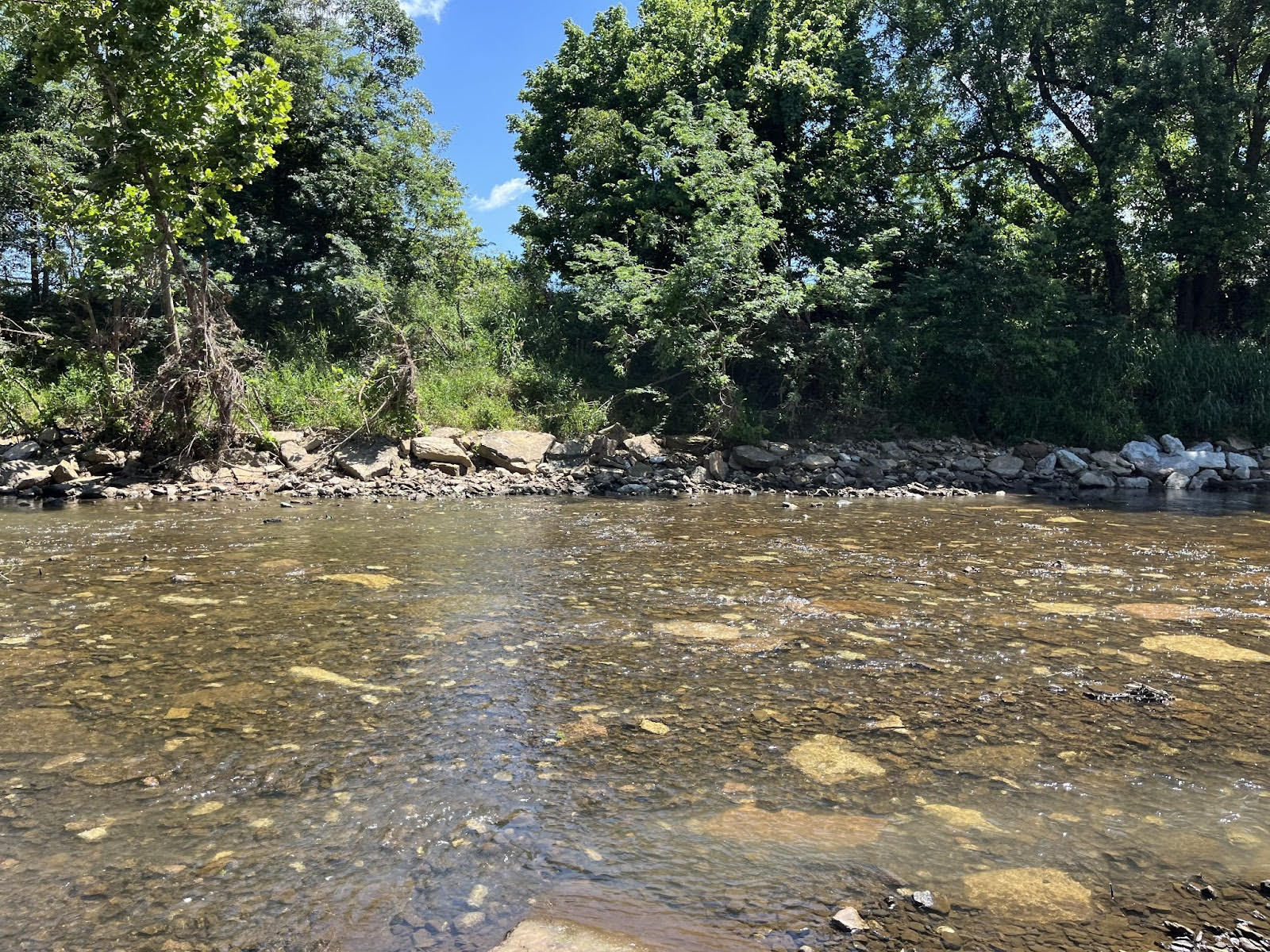
Once complete, the project will have reconnected 434 miles of streams in the watershed, greatly improving habitat and fish passage for many aquatic species. By reconnecting this magnificent stream, the project isn’t just restoring a waterway; it’s restoring a lifeline for both the environment and the people of Northwest Arkansas.
####
CUTLINES:
ROCK PILE
AGFC Stream Biologist Megan Brandt stands atop 2,700 tons of boulders staged to stabilize streambanks in the next phase of the War Eagle Creek restoration. AGFC photo.
TRACKHOE
The first stage of the War Eagle Creek restoration was to remove a low-head dam that formed Huntsville Lake in 2024. AGFC photo.
DUMP TRUCK
Contractors plugged a previous portion of Huntsville Lake and rerouted War Eagle Creek back to its original path in 2025. AGFC photo.
STABILIZED TURN
Rock was used to greatly reduce erosion within the new creek turn established at War Eagle Creek. AGFC photo.
ROCKY STREAMBED
Riffles were created at the upstream and downstream ends of a turn in War Eagle Creek to manage the speed of the current and reduce siltation. AGFC photo.
Recent News
Subscribe to Our Weekly Newsletter E-mails
Don’t miss another issue. Sign up now to receive the AGFC Wildlife Weekly Newsletter in your mailbox every Wednesday afternoon (Waterfowl Reports are published weekly during waterfowl season and periodically outside the season). Fishing Reports arrive on Thursdays. Fill in the following fields and hit submit. Thanks, and welcome!

